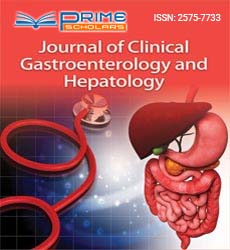Commentary - (2024) Volume 8, Issue 4
Understanding Stomach Ulcers: Causes, Symptoms, and Treatment
Korbin Leilah*
Department of Anatomy, Columbia University, USA
*Correspondence:
Korbin Leilah,
Department of Anatomy, Columbia University,
USA,
Email:
Received: 31-Jul-2024, Manuscript No. IPJCGH-24-21624;
Editor assigned: 02-Aug-2024, Pre QC No. IPJCGH-24-21624 (PQ);
Reviewed: 16-Aug-2024, QC No. IPJCGH-24-21624;
Revised: 21-Aug-2024, Manuscript No. IPJCGH-24-21624 (R);
Published:
28-Aug-2024, DOI: 10.36648/2575-7733.8.4.33
Description
Stomach ulcers, also known as peptic ulcers, are open sores
that develop on the lining of the stomach or the first part of
the small intestine. These painful lesions can lead to significant
discomfort and complications if left untreated. Understanding
the causes, symptoms, diagnosis, and treatment options
for stomach ulcers is crucial for effective management
and prevention. Stomach ulcers are a type of peptic ulcer
that specifically occur in the stomach. They result from an
imbalance between digestive acids in the stomach and the
protective mechanisms of the stomach lining. While they are
treatable, untreated ulcers can lead to serious complications,
such as bleeding or perforation of the stomach wall. This
infection is the most common cause of stomach ulcers. H. pylori
disrupts the protective mucus layer of the stomach, making it
susceptible to damage from stomach acid. These medications
can irritate the stomach lining and inhibit the production of
protective mucus, leading to ulcer formation. Conditions that
lead to excessive production of stomach acid, such as Zollinger-
Ellison syndrome, can contribute to ulcer formation. Stress
and diet were historically thought to be major contributors,
but current research suggests they may play a smaller role in
ulcer development. Both smoking and excessive alcohol intake
can weaken the stomach’s protective lining, making it more
vulnerable to ulcer formation. Smoking also interferes with
ulcer healing. A family history of peptic ulcers may increase
an individual’s risk. Certain genetic factors can influence how
the body responds to H. pylori infection and the production
of stomach acid. The symptoms of stomach ulcers can vary in
intensity and may include: A burning or gnawing sensation in
the stomach is the most common symptom. This pain often
occurs between meals or during the night. Some individuals
may experience feelings of nausea or even vomit, sometimes
containing blood. Due to pain and discomfort, individuals may
avoid eating, leading to weight loss. Many people with ulcers
report feelings of fullness or bloating, particularly after meals.
A burning sensation in the chest can occur, often mistaken for
acid reflux. Sudden, intense pain may indicate a perforated
ulcer, a medical emergency. Diagnosing stomach ulcers
typically involves a combination of medical history, physical
examination, and diagnostic tests: Healthcare providers will
review symptoms, medical history, and any use of NSAIDS or
other medications. An endoscopy is a common procedure
where a thin tube with a camera is inserted through the mouth
to visualize the stomach lining. An upper gastrointestinal series
involves drinking a contrast liquid followed by X-rays to identify
ulcers or abnormalities in the stomach and duodenum. Testing
for H. pylori can be done through breath, blood, or stool tests.
These tests help determine if the infection is present, guiding
treatment. Treatment for stomach ulcers focuses on relieving
symptoms, promoting healing, and addressing the underlying
causes. Common treatment approaches include: Drugs such
as ranitidine decrease acid secretion, providing relief from
symptoms. Over-the-counter antacids can help neutralize
stomach acid and provide quick relief from pain. If it is present,
a combination of antibiotics will be prescribed to eradicate the
infection.
Acknowledgement
None.
Conflict Of Interest
The authors declare that they have no conflict of interest.
Citation: Leilah K (2024) Understanding Stomach Ulcers: Causes, Symptoms, and Treatment. J Clin Gastroenterol Hepatol. 8:33.
Copyright: © 2024 Leilah K. This is an open-access article distributed under the terms of the Creative Commons Attribution
License, which permits unrestricted use, distribution, and reproduction in any medium, provided the original author and source
are credited.

